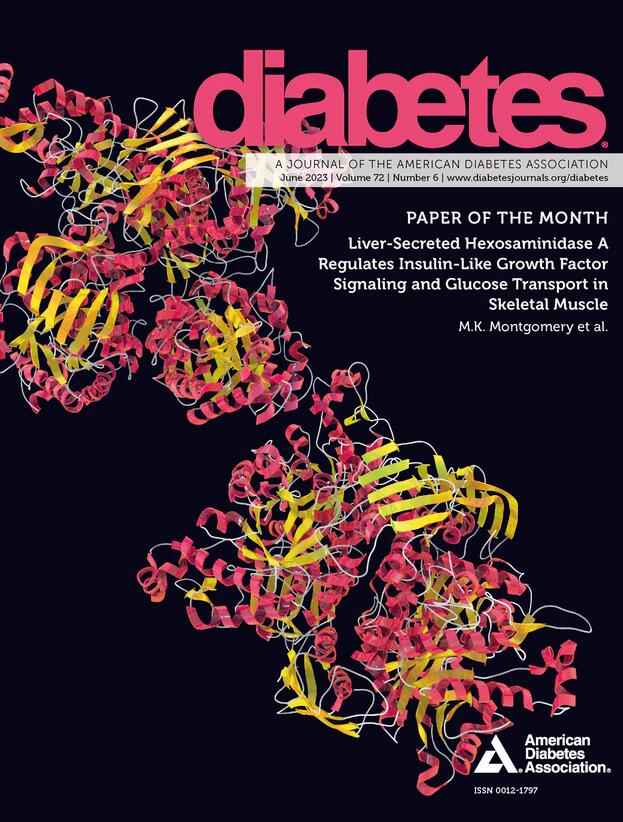糖尿病细胞替代疗法的研究进展
IF 6.2
1区 医学
Q1 ENDOCRINOLOGY & METABOLISM
引用次数: 0
摘要
胰岛细胞替代疗法已经发展成为1型糖尿病并发低血糖和血糖不稳定的可行治疗选择。胰岛制造、胰岛移植程序、移植周围受体管理和免疫抑制方案的改进使大多数受体获得了良好的结果。随后的3期试验证明了移植胰岛在恢复接近正常血糖、血糖稳定和防止严重低血糖方面的有效性,并对入组的高危人群具有可接受的安全性。一些国家的卫生当局已批准将已故供体胰岛移植用于治疗1型糖尿病和复发性严重低血糖患者。这些成就扩大了学术界和工业界通过定向分化替代β细胞来产生多能干细胞衍生β细胞的努力。正在进行的临床试验的初步结果表明,干细胞来源的β细胞移植可以持续地恢复免疫抑制的1型糖尿病受体的胰岛素独立性,从而标志着在产生无限和统一的移植细胞供应方面取得了重大进展。避免慢性免疫抑制的风险是下一个前沿。一些策略已经进入或正在接近临床研究,包括免疫隔离胰岛、工程免疫特权胰岛植入位置、使胰岛免疫逃避和诱导移植胰岛免疫耐受。利用高维、多组学技术对移植物定向免疫和移植物命运进行深入分析,将提供新的见解,有望转化为维持移植物长期的功能性存活。利用这些平行进展路径将促进细胞替代疗法在糖尿病护理中的更广泛临床应用。1型糖尿病患者免疫抑制受体的死亡供体来源的原代人胰岛移植恢复了接近正常的血糖水平,并防止了严重的低血糖。胚胎干细胞衍生的β细胞移植可以恢复免疫抑制的1型糖尿病患者的胰岛素依赖性。临床试验正在进行中,并计划评估成熟干细胞来源的β细胞移植在1型糖尿病患者中具有短暂、局部、最小和/或无维持性免疫抑制的安全性和有效性。对移植胰岛的免疫和胰岛移植物命运的高维、多组监测将有助于确定胰岛移植物持续功能的决定因素和最有可能从细胞替代疗法中受益的患者。本文章由计算机程序翻译,如有差异,请以英文原文为准。
Advances in Cell Replacement Therapies for Diabetes
Islet cell replacement therapies have evolved as a viable treatment option for type 1 diabetes complicated by problematic hypoglycemia and glycemic lability. Refinements of islet manufacturing, islet transplantation procedures, peritransplant recipient management, and immunosuppressive protocols allowed most recipients to achieve favorable outcomes. Subsequent phase 3 trials of transplantation of deceased donor islets documented the effectiveness of transplanted islets in restoring near-normoglycemia, glycemic stability, and protection from severe hypoglycemia, with an acceptable safety profile for the enrolled high-risk population. Health authorities in several countries have approved deceased donor islet transplantation for treating patients with type 1 diabetes and recurrent severe hypoglycemia. These achievements amplified academic and industry efforts to generate pluripotent stem cell–derived β-cells through directed differentiation for β-cell replacement. Preliminary results of ongoing clinical trials suggest that the transplantation of stem cell–derived β-cells can consistently restore insulin independence in immunosuppressed recipients with type 1 diabetes, thus signaling the profound progress made in generating an unlimited and a uniform supply of cells for transplant. Avoiding the risks of chronic immunosuppression represents the next frontier. Several strategies have entered or are approaching clinical investigation, including immune-isolating islets, engineering immune-privileged islet implantation sites, rendering islets immune evasive, and inducing immune tolerance in transplanted islets. Capitalizing on high-dimensional, multiomic technologies for deep profiling of graft-directed immunity and the fate of the graft will provide new insights that promise to translate into sustaining functional graft survival long-term. Leveraging these parallel progression paths will facilitate the wider clinical adoption of cell replacement therapies in diabetes care. Article Highlights Transplantation of deceased donor–derived primary human islets has restored near-normoglycemia and protection from severe hypoglycemia in immunosuppressed recipients with type 1 diabetes. Transplantation of embryonic stem cell–derived β-cells has restored insulin independence in immunosuppressed recipients with type 1 diabetes. Clinical trials are underway and planned to evaluate the safety and efficacy of transplantation of mature stem cell–derived β-cells with transient, local, minimal, and/or no-maintenance immunosuppression in recipients with type 1 diabetes. The high-dimensional, multiomic monitoring of immunity to transplanted islets and of the fate of the islet graft will faciliate the identification of determinants of sustained islet graft function and of patients most likely to benefit from cell replacement therapies.
求助全文
通过发布文献求助,成功后即可免费获取论文全文。
去求助
来源期刊

Diabetes
医学-内分泌学与代谢
CiteScore
12.50
自引率
2.60%
发文量
1968
审稿时长
1 months
期刊介绍:
Diabetes is a scientific journal that publishes original research exploring the physiological and pathophysiological aspects of diabetes mellitus. We encourage submissions of manuscripts pertaining to laboratory, animal, or human research, covering a wide range of topics. Our primary focus is on investigative reports investigating various aspects such as the development and progression of diabetes, along with its associated complications. We also welcome studies delving into normal and pathological pancreatic islet function and intermediary metabolism, as well as exploring the mechanisms of drug and hormone action from a pharmacological perspective. Additionally, we encourage submissions that delve into the biochemical and molecular aspects of both normal and abnormal biological processes.
However, it is important to note that we do not publish studies relating to diabetes education or the application of accepted therapeutic and diagnostic approaches to patients with diabetes mellitus. Our aim is to provide a platform for research that contributes to advancing our understanding of the underlying mechanisms and processes of diabetes.
 求助内容:
求助内容: 应助结果提醒方式:
应助结果提醒方式:


